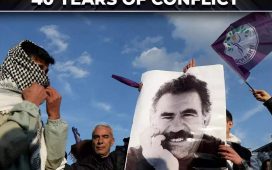Rescuers freed four people, including a pregnant woman and a girl, from collapsed buildings in Mandalay, the city in central Myanmar near the epicentre of Friday’s 7.7-magnitude earthquake, China’s Xinhua news agency reported.
A civil war in the Southeast Asian nation, where a military junta seized power in a coup in 2021, was complicating efforts to reach those injured and made homeless by Myanmar’s biggest quake in a century.
“Access to all victims is an issue…given the conflict situation. There are a lot of security issues to access some areas across the front lines in particular,” Arnaud de Baecque, resident representative of the International Committee of the Red Cross in Myanmar, told Reuters.
One rebel group said Myanmar’s ruling military was still conducting
airstrikes on villages in the aftermath of the quake, and Singapore’s foreign minister called for an immediate ceasefire to help relief efforts. In the Thai capital Bangkok, rescuers pulled out another body from the rubble of an under-construction skyscraper that collapsed in the quake, bringing the death toll from the building collapse to 12, with a total of 19 dead across Thailand and 75 still missing at the building site.
Scanning machines and sniffer dogs were deployed at the site and Bangkok’s Deputy Governor Tavida Kamolvej said rescuers were urgently working out how to access an area where signs of life had been detected, three days on from the quake.
Realistic chances of survival diminish after 72 hours, she said, adding: “We have to speed up. We’re not going to stop even after 72 hours.”
In Myanmar, state media said at least 1,700 people have been confirmed dead as of Sunday and that the military government had declared a week-long mourning period from Monday. The Wall Street Journal, citing the junta, reported the death toll had reached 2,028 in Myanmar.
Reuters could not immediately confirm the new death toll. Media access has been restricted in the country since the junta took power. Junta chief General Min Aung Hlaing warned at the weekend that the number of fatalities could rise.
RELIEF EFFORTS
China, India and Thailand are among Myanmar’s neighbours that have sent relief materials and teams, along with aid and personnel from Malaysia, Singapore and Russia.
“It doesn’t matter how long we work. The most important thing is that we can bring hope to the local people,” said Yue Xin, head of the China Search and Rescue Team that pulled people out of the rubble in Mandalay, Xinhua reported.
The United Nations said it was rushing relief supplies to survivors in central Myanmar.
“Our teams in Mandalay are joining efforts to scale up the humanitarian response despite going through the trauma themselves,” said Noriko Takagi, the U.N. refugee agency’s representative in Myanmar.
The United States pledged $2 million in aid “through Myanmar-based humanitarian assistance organizations”. It said in a statement that an emergency response team from USAID, which is undergoing massive cuts under the Trump administration, is deploying to Myanmar.
The quake devastation has piled more misery on Myanmar, already in chaos from a civil war that grew after the elected government of Nobel Peace Prize laureate Aung San Suu Kyi was ousted by the military.
Critical infrastructure – including bridges, highways, airports and railways – across the country of 55 million lie damaged, slowing humanitarian efforts while the conflict that has battered the economy, displaced over 3.5 million people and debilitated the health system, rages on.
“We see devastated communities across the country in Mandalay and (the capital) Naypyidaw in particular…People are still sleeping outside, can’t access their homes, so they don’t have capacity to cook their meals, said the ICRC’s de Baecque.
“All the health structures that have been damaged… are not delivering what they were doing in terms of healthcare and have a difficulty to absorb extra needs.”












